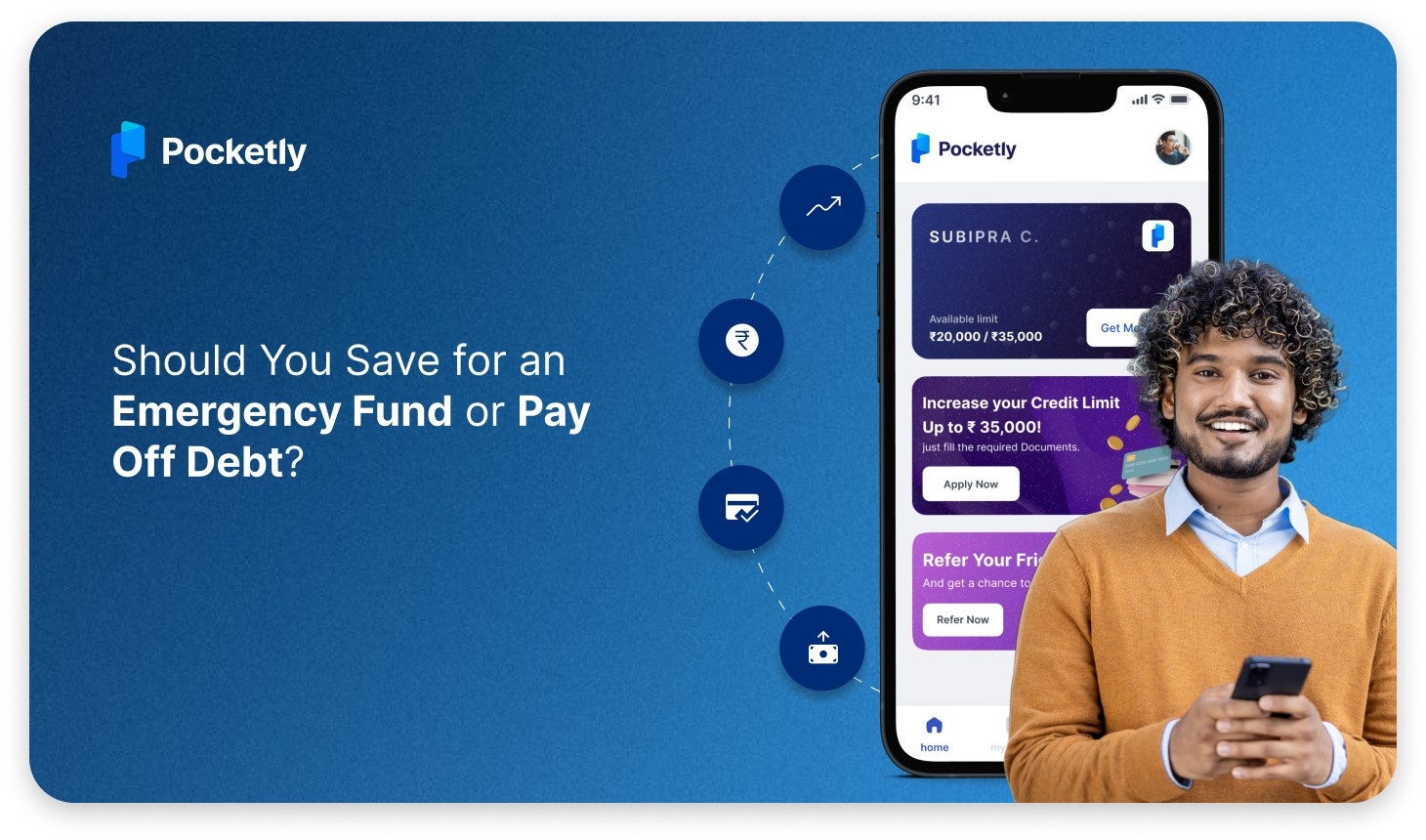
Let’s face it—running a business isn’t just about making sales; it’s about getting paid on time. You could have the best products or services, but if your customers delay payments, your cash flow takes a hit. That’s where credit control comes in.
Credit control is the process that ensures you extend credit wisely and get paid on time. Whether you’re offering payment terms to customers or managing invoices, having a strong credit control system can mean the difference between steady business growth and financial struggles as well.
So, how does it work? Let’s dive into the meaning of credit control, how it works, and why it’s crucial for your financial stability.
What is Credit Control?
Credit control is the process of managing how and when you extend credit to customers while ensuring payments are received on time. It helps you reduce financial risk, maintain a steady cash flow, and prevent bad debts. Without effective credit control, your business might struggle with delayed payments, cash shortages, or even non-payment issues.
A strong credit control system allows you to sell more while protecting your finances, ensuring that customers who receive credit can repay on time.
Key Features of Credit Control
- Credit Assessment Before Approval – Before offering credit, you should evaluate your customer’s financial health by checking their credit history, payment patterns, and reliability. This helps you decide how much credit to extend and to whom.
- Setting Clear Credit Limits – Instead of giving unlimited credit, you should set specific limits based on the customer’s payment capacity and past records. This reduces the risk of large unpaid bills.
- Well-Defined Payment Terms – You need to clearly outline repayment schedules, due dates, and late payment penalties so that customers understand their obligations. This avoids confusion and ensures smoother transactions.
- Ongoing Monitoring of Invoices and Payments – Once credit is extended, it’s important to keep track of outstanding invoices, pending payments, and due dates. Regular monitoring ensures that you spot potential late payments early and take action.
- Effective Debt Collection Strategies – If a customer misses a payment, you should have a structured follow-up process, including reminders, calls, and escalation procedures if needed. This minimises financial losses and ensures prompt collections.
Purpose of Credit Control
- Ensures a Healthy Cash Flow – Your business needs a steady flow of cash to pay suppliers, employees, and other expenses. Good credit control ensures you get paid on time, so you always have the funds to keep things running.
- Reduces Risk of Non-Payments – Not all customers will pay on time. By having a solid credit control process, you can identify risky clients early, limit their credit, and prevent major financial losses.
- Builds Trust and Transparency with Customers – When you set clear credit terms, your customers know exactly what’s expected. This fosters trust and professional relationships, reducing the chances of disputes over payments.
- Helps You Plan for Business Growth – When you know how much credit you’ve extended and when payments are expected, you can make better financial decisions, invest in expansion, and manage business operations smoothly.
- Prevents Last-Minute Cash Crunches – Unexpected payment delays can disrupt your financial planning. A strong credit control system helps you avoid last-minute shortages by ensuring payments arrive when they should.
By implementing effective credit control, you can confidently grow your business, extend credit wisely, and ensure financial stability without the stress of unpaid invoices.
Essential Steps in the Credit Control Process
A well-structured credit control process ensures that businesses extend credit responsibly, minimise financial risks, and maintain steady cash flow. By assessing customer creditworthiness, setting clear policies, and actively monitoring payments, businesses can prevent delayed payments and reduce the chances of bad debts.
To ensure an efficient credit control system, here are the key steps businesses should follow:
1. Obtain Customer Info and Perform Due Diligence
Before extending credit, it’s crucial to gather accurate customer details and assess their financial health. Due diligence helps identify high-risk borrowers and ensures that only reliable customers receive credit.
- Collect key details such as business registration, tax ID, and contact information.
- Verify past payment records and credit history with other vendors or financial institutions.
- Check for any existing debts, defaults, or legal issues related to payments.
2. Conduct Credit Checks and Set Limits
Not all customers have the same ability to repay loans or invoices. Conducting credit checks helps determine the financial standing of a customer before approving credit.
- Use credit reports from agencies to evaluate a customer's repayment behaviour.
- Set credit limits based on financial history, revenue, and past transactions.
- Establish clear payment terms to define when payments are due and penalties for late payments.
By setting realistic credit limits, businesses can prevent over-lending and minimise potential losses.
3. Monitor Pending and Overdue Invoices
Once credit is extended, you must closely monitor outstanding invoices and due payments to prevent overdue accounts from piling up.
- Maintain a centralised record of invoices with due dates and amounts.
- Send gentle reminders before the due date to encourage early payments.
- Categories overdue invoices based on their risk level and take proactive steps to recover funds.
Regular monitoring ensures that you do not suffer from unexpected cash flow shortages.
4. When to Escalate Issues to Credit Management
If you’ve been following up on payments repeatedly with no success, it’s time to take the next step. Unpaid invoices can hurt your cash flow, and delaying action only makes things worse. Here’s what you need to do:
- Identify accounts that are severely overdue and need urgent attention.
- Offer a repayment plan or negotiate with customers struggling to pay.
- If non-payment continues, consider legal action or debt recovery services.
By handling overdue payments strategically, you can reduce financial risks, extend credit responsibly, and ensure that your business gets paid on time.
How Credit Control Works
Credit control is all about finding the right balance between growing your sales and keeping your finances secure. Offering credit can boost your sales, but it also brings risks—late payments, defaults, and cash flow problems. A strong credit control system ensures that you only extend credit to customers who are reliable and that payments come in on time.
Here’s how an effective credit control process works:
- Helping Customers Buy Now, Pay Later—Without Risking Your Business – You allow customers to make purchases on credit, but only after carefully checking their payment history and creditworthiness.
- Setting Clear Credit Terms and Payment Schedules – Establish clear credit limits, due dates, late payment penalties, and interest rates so that there’s no confusion about financial obligations.
- Using Reminders, Calls, and Notices to Ensure Payments – Proactively send reminders and follow-ups to make sure customers pay their invoices on time.
A strong credit control system helps you maintain cash flow, avoid financial stress, and keep your business running smoothly.
Different Methods of Credit Control
Credit control helps manage how you extend credit and recover payments while reducing financial risks. There are two main types of credit control: qualitative and quantitative methods. Here’s how they work:
1. Qualitative Credit Control
Instead of directly limiting credit, qualitative methods influence lending behavior by setting policies and guidelines.
What It Is:
- A strategy used to guide lenders and borrowers without placing hard restrictions on credit.
- Helps prevent excessive borrowing and reduce financial risks.
How It Works:
- Banks and lenders set specific criteria for who qualifies for credit, how much they can borrow, and under what conditions.
- These rules encourage responsible borrowing and protect lenders from high-risk customers.
Benefits:
- Prevents excessive credit flow that could lead to financial instability.
- Encourages customers to borrow responsibly.
- Reduces loan defaults and bad debts.
Example: Instead of denying high-risk customers credit, a bank might lower their maximum loan limit.
2. Quantitative Credit Control
These methods directly regulate how much credit is available by adjusting interest rates, reserve requirements, and liquidity in the banking system.
What It Is:
- A financial regulation strategy used by central banks to control credit supply and prevent inflation.
How It Works:
- Central banks adjust interest rates, set reserve requirements, and manage liquidity to regulate how much credit is available.
Benefits:
- Helps maintain economic stability by preventing excessive credit.
- Controls inflation and economic fluctuations.
- Ensures financial institutions lend responsibly.
Example: When inflation rises, the central bank increases interest rates to make borrowing more expensive and slow down credit flow.
To keep your credit system strong, use both qualitative and quantitative approaches to maintain stability while supporting business growth.
Credit Control vs. Credit Management
Credit control and credit management are closely related but serve different purposes. Credit control focuses on setting rules for who gets credit, while credit management ensures payments are collected on time.
| Aspect | Credit Control | Credit Management |
|---|---|---|
| Definition | Credit control is about setting clear policies and rules for extending credit to customers. It involves assessing risk and deciding who qualifies for credit. | Credit management focuses on ensuring that once credit is given, payments are collected on time. It includes monitoring outstanding invoices and handling overdue payments. |
| Purpose | The main goal of credit control is to prevent financial losses by granting credit only to reliable customers. | The purpose of credit management is to protect cash flow by ensuring timely payment collection and minimizing overdue accounts. |
| Focus Area | Credit control happens before credit is approved. It includes evaluating a customer’s financial health, setting credit limits, and defining payment terms. | Credit management takes over after credit has been granted. It involves tracking payments, sending reminders, and dealing with overdue accounts. |
| Risk Management | By carefully screening customers, credit control helps businesses avoid lending to those who are likely to default. | Credit management helps reduce financial risks by recovering overdue payments and minimizing bad debts. |
| Key Activities | This includes running credit checks, enforcing credit policies, setting payment terms, and ensuring customers understand their financial obligations before credit is given. | Credit management involves tracking invoices, sending payment reminders, following up on late payments, and taking action on unpaid debts. |
| Impact on Business | A strong credit control system prevents financial losses by making sure only eligible customers receive credit. | Effective credit management ensures a steady cash flow, helping businesses avoid liquidity issues and financial strain. |
Credit control acts as your first line of defense, while credit management ensures payments come in after credit is granted.
Factors That Affect Credit Control
Several factors influence how well you can control credit, ensuring that payments are made on time while protecting your cash flow. Let’s break them down:
- Customer Creditworthiness – Before you extend credit, take a deep dive into the customer’s financial health. Look at their credit scores, past payment records, and overall transaction history to assess their reliability. Granting credit to customers with a history of late payments can put your business at risk.
- Industry Trends & Market Conditions – The economy and market trends play a huge role in credit control. During economic downturns, customers may struggle with payments, so tightening credit policies is crucial. On the flip side, when business is booming, offering more flexible credit terms can help you attract and retain customers.
- Business Cash Flow – Your company’s financial stability dictates how much credit you can afford to extend. If your cash reserves are low, offering too much credit can strain operations. Always maintain a balance between cash inflows and outstanding payments to keep your business running smoothly.
- Clear Credit Terms – Unclear terms can lead to confusion, disputes, and delayed payments. Clearly outline credit limits, due dates, penalties for late payments, and any applicable interest rates in written agreements. This ensures customers understand their obligations upfront, reducing misunderstandings later.
- Debt Collection Strategy – Some customers may miss payments, and when they do, having a structured debt collection plan is essential. Set up automated reminders, follow-up calls, and escalation procedures for overdue accounts. The sooner you act, the higher your chances of recovering unpaid debts.
- Customer Relationships & Trust – Not all customers are the same. Long-term, reliable clients may deserve more flexible payment terms, while new or high-risk customers should have stricter conditions. Building strong relationships can lead to better communication and a higher likelihood of timely payments.
- Technology & Automation – Relying on manual processes can slow things down and increase the risk of errors. Automated invoicing, payment tracking, and AI-driven credit assessments can streamline credit control, reducing missed payments and ensuring efficiency.
- Legal Compliance – Credit control isn’t just about internal policies—it also involves following financial regulations. Ensure that your credit practices comply with industry laws, including fair credit policies, data protection rules, and debt recovery procedures, to avoid legal issues.
By keeping these factors in check, you can strengthen your credit control processes, minimise financial risks, and maintain a healthy cash flow.
Common Credit Control Mistakes to Avoid
Even with a solid credit control strategy in place, mistakes can happen. Ignoring small errors can lead to cash flow issues, delayed payments, and financial stress. Here are the most common credit control mistakes and how to avoid them:
- Granting Credit Without Proper Checks – Never assume a customer will pay on time just because they seem trustworthy. Always run credit checks, review financial records, and assess their payment history before approving credit. This simple step can save you from major losses.
- Not Setting Clear Credit Terms – If customers don’t know exactly when they need to pay and what happens if they don’t, they might delay payments. Make sure all credit terms including due dates, interest rates, and late fees—are clearly documented and agreed upon before extending credit.
- Failing to Monitor Payments Regularly – Many businesses don’t track outstanding invoices closely enough. Instead of waiting until payments are overdue, keep a close eye on your accounts receivable. Set up regular payment tracking and send reminders before due dates to prevent delays.
- Not Following Up on Late Payments – Some businesses hesitate to follow up on overdue payments, fearing they’ll upset customers. However, professional and persistent follow-ups—through emails, calls, and written reminders can encourage timely payments while maintaining good relationships.
- Giving High Credit Limits Without a Track Record – Offering large credit limits to new customers without evaluating their payment history is risky. Start with smaller credit limits and increase them gradually as they prove their reliability over time.
- Relying on Manual Processes – Handling credit control manually can lead to errors, missed follow-ups, and inefficiencies. Automating invoicing, reminders, and credit tracking can save time and reduce human mistakes, making your credit control process more effective.
- Delaying Debt Recovery Actions – If a customer consistently ignores payment requests, waiting too long to act can make it harder to recover your money. Have a clear escalation process—whether it’s sending formal notices, involving a credit management team, or taking legal action when necessary.
By being proactive and avoiding these mistakes, you can ensure smoother credit management, maintain a strong cash flow, and reduce the risk of unpaid invoices.
Struggling with cash flow due to poor credit control? Don’t let limited funds hold your business back! Pocketly offers quick personal loans with flexible policies, helping you cover expenses and keep operations running smoothly. Get the support you need—hassle-free and fast!
Why Choose Pocketly for a Seamless Borrowing Experience?
- Instant Approvals and Quick Disbursal – Get loan approvals in minutes and access funds without long waiting times.
- Flexible Loan Amounts – Borrow as little as ₹1,000 for small expenses or up to ₹25,000 for bigger financial needs.
- Minimal Documentation – No complicated paperwork, just the essential documents for a smooth and quick process.
- Complete Transparency – Know your interest rates and fees upfront—no hidden charges or last-minute surprises.
- Credit-Friendly Approach – Even if your credit score isn’t perfect, Pocketly offers accessible loan options.
- Flexible Repayment Plans – Choose repayment schedules that work for you, making loan management stress-free.
Conclusion
Effective credit control is essential for maintaining financial stability and smooth business operations. By avoiding common mistakes, setting clear credit policies, and staying proactive in tracking payments, businesses can reduce risks, improve cash flow, and minimise bad debts.
And if you ever need quick access to funds, Pocketly is here to help! With fast approvals, minimal paperwork, and flexible repayment options, getting an instant personal loan has never been easier.
Apply today and get the cash you need—right when you need it!
FAQs
Why is credit control important for businesses?
Credit control helps businesses maintain steady cash flow, reduce bad debts, and ensure timely payments from customers. It minimises financial risks and ensures long-term stability.
What happens if a business does not have a credit control system?
Without a proper credit control process, businesses may struggle with delayed payments, financial losses, and cash flow shortages, making it harder to sustain operations.
How can businesses improve their credit control process?
Businesses can improve credit control by conducting credit checks, setting clear credit terms, automating invoice tracking, and following up on overdue payments promptly.
Can I get a Pocketly loan if I have a low credit score?
Yes! Pocketly offers instant personal loans even if your credit score isn’t perfect. We assess multiple factors to ensure you get the financial support you need.
How fast can I get a loan through Pocketly?
With quick approvals and minimal paperwork, Pocketly ensures that funds are disbursed to your account within minutes, making it a hassle-free borrowing experience.
















